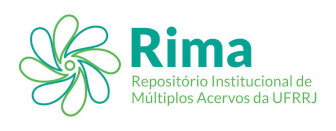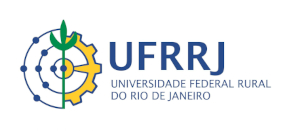Please use this identifier to cite or link to this item:
https://rima.ufrrj.br/jspui/handle/20.500.14407/21768| Tipo do documento: | Dissertação |
| Title: | O Memorial 9 de Novembro: perpetuação da memória política da cidade de Volta Redonda (RJ) |
| Other Titles: | The Memorial 9 de novembro: Perpetuation of the Political Memory of the City of Volta Redonda (RJ) |
| Authors: | Guimarães, Karoline Santana |
| Orientador(a): | Cerdera, Fábio Pereira |
| Primeiro membro da banca: | Cerdera, Fábio Pereira |
| Segundo membro da banca: | Carlos, Cláudio Antônio Santos Lima |
| Terceiro membro da banca: | Andrade, Inês El-Jaick |
| Keywords: | Cidade;Memória;Patrimônio;City;Memory;Heritage |
| Área(s) do CNPq: | História |
| Idioma: | por |
| Issue Date: | 28-Mar-2004 |
| Publisher: | Universidade Federal Rural do Rio de Janeiro |
| Sigla da instituição: | UFRRJ |
| Departamento: | Instituto Multidisciplinar de Nova Iguaçu |
| Programa: | Programa de Pós-Graduação em Patrimônio, Cultural e Sociedade |
| Citation: | GUIMARÃES, Karoline Santana. O Memorial 9 de Novembro: perpetuação da memória política da cidade de Volta Redonda (RJ). 2024. 154 f. Dissertação (Mestrado em Patrimônio, Cultura e Sociedade) - Instituto Multidisciplinar) - Instituto Multidisciplinar, Universidade Federal Rural do Rio de Janeiro, Nova Iguaçu, RJ, 2024. |
| Abstract: | O presente estudo tem como temática a relação entre o patrimônio material cultural e a construção e perpetuação da memória política da cidade de Volta Redonda, utilizando como objeto de análise o Memorial 9 de novembro, projetado pelo arquiteto Oscar Niemeyer. Monumentos de rememoração são construídos nas cidades por representantes do poder público, que conferem a esses o caráter oficial e, assim, legitimam determinadas narrativas. A problematização que circunda essas representações – mais especificamente o memorial em pauta – é o questionamento acerca de quem legitima o patrimônio e como o município apresenta e representa sua história política, destacando a Greve de 1988 na Companhia Siderúrgica Nacional (CSN) e o movimento sindical. A metodologia utilizada nesta pesquisa é baseada em uma abordagem bibliográfica e documental, que envolve a revisão e análise de uma ampla gama de materiais relevantes, como livros, artigos acadêmicos, documentos e publicações especializadas. Essa revisão bibliográfica permite a obtenção de informações abrangentes e embasamento teórico para o estudo. Durante a pesquisa de campo, foram realizados registros fotográficos, os quais desempenham um papel importante na documentação visual dos elementos de interesse relacionados ao patrimônio cultural estudado. Autores como Paul Ricouer (2007), Pierre Nora (1993) e Françoise Choay (2000) foram consultados e contribuíram teoricamente para a pesquisa. A pesquisa objetiva refletir sobre a relação da cidade de Volta Redonda com a sua memória operária sindicalista através do patrimônio cultural e os embates que o cerca. Assim, abordamos o direito à memória e sua relação com o reconhecimento de patrimônios não vinculados à classe social dominante. Isso justifica a necessidade contemporânea de discutir as conexões políticas, estéticas e de memória envolvidas na preservação e na destruição de patrimônios culturais. A rigor, a pesquisa visa compreender a amplitude e a diversidade das relações estabelecidas entre a memória, a cidade e o patrimônio, e como elas estão relacionadas ao processo de afirmação e reconhecimento da identidade social de determinados grupos através da memória pela perspectiva das manifestações culturais. Consideramos aqui, a relação entre o passado e o presente e como o presente pode se corporificar em determinados lugares e/ou objetos à memória monumental, abarrotados de significações, graças às vivências carregadas de mudanças espaciais e sociais, elencadas aos discursos intrínsecos e quase silenciosos sobre poder. Deste modo, a análise do Memorial 9 de novembro possibilita uma reflexão mais aprofundada sobre a narrativa de construção dos patrimônios e a maneira como eles são apresentados e preservados, sobretudo no que se refere à luta dos trabalhadores da região do Sul Fluminense. |
| Abstract: | The present study explores the relationship between material cultural heritage and the construction and perpetuation of the political memory of the city of Volta Redonda, focusing on the analysis of the Memorial 9 de Novembro designed by architect Oscar Niemeyer. Remembrance monuments are constructed in cities by representatives of the public authorities, endowing them with an official character and thereby legitimizing specific narratives. The problematics surrounding these representations—specifically the memorial in question—revolve around questioning who legitimizes heritage and how the municipality presents and represents its political history, highlighting the 1988 Strike at the National Steel Company (CSN) and the labor movement. The methodology employed in this research is based on a documentary and bibliographic approach, involving the review and analysis of a wide range of relevant materials such as books, academic articles, and specialized publications. This bibliographic review enables comprehensive information retrieval and theoretical grounding for the study. During field research, photographic records were made, playing an important role in visually documenting elements of interest related to the studied cultural heritage. Authors such as Paul Ricouer (2007), Pierre Nora (1993), and Françoise Choay (2000) were consulted and contributed theoretically to the research. The research aims to reflect on Volta Redonda's connection to its union worker memory through cultural heritage and the conflicts surrounding it. This dissertation addresses the right to memory and its relation to the recognition of heritage not linked to the dominant social class. This justifies the contemporary need to discuss the political, aesthetic, and memory connections involved in the preservation and destruction of cultural heritage. The research aims to understand the breadth and diversity of the relationships established between memory, the city, and heritage, and how they are related to the process of affirmation and recognition of the social identity of certain groups through memory from the perspective of cultural manifestations. Here, we consider the relationship between the past and the present and how the present can embody itself in certain places and/or objects as monumental memory, laden with meanings, thanks to experiences marked by spatial and social changes, intertwined with intrinsic and almost silent discourses on power. Thus, the analysis of the Memorial 9 de Novembro allows for a deeper reflection on the narrative of heritage construction and how they are presented and preserved, especially regarding the struggle of workers in the Southern Fluminense region. |
| URI: | https://rima.ufrrj.br/jspui/handle/20.500.14407/21768 |
| Appears in Collections: | Mestrado em Patrimônio, Cultura e Sociedade |
Se for cadastrado no RIMA, poderá receber informações por email.
Se ainda não tem uma conta, cadastre-se aqui!
Files in This Item:
| File | Description | Size | Format | |
|---|---|---|---|---|
| 2024 - Karoline Santana Guimarães.Pdf | 4.95 MB | Adobe PDF |  View/Open |
Items in DSpace are protected by copyright, with all rights reserved, unless otherwise indicated.

